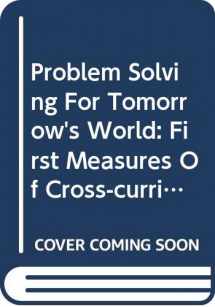
Problem Solving For Tomorrow's World: First Measures Of Cross-curricular Competencies From Pisa 2003 (Programme for International Student Assessment (PISA))
Book details
Summary
Description
The Programme for International Student Assessment (PISA) is a three-yearly survey of the knowledge and skills of 15-year-olds in the principal industrialised countries. The product of a collaboration between participating governments through the OECD, it draws on leading international expertise to develop valid comparisons across countries and cultures.The 2003 assessment included an examination of students' problem-solving skills, providing for the first time a direct assessment of life competencies that apply across different areas of the school curriculum. Students were required to identify problems in various settings, choose relevant information or constraints, represent possible alternatives or solution paths, develop solution strategies, solve the problem and communicate the solution. About one in five 15-year-olds in OECD countries can be considered a reflective, communicative problem solver. These students are able to not only analyse a situation and make decisions, they are also capable of managing multiple conditions simultaneously. In some countries, more than a third of students reach this high level of problem-solving competencies. In other countries, however, the majority of students cannot even be classified as basic problem solvers, a level at which they are required to deal with only a single data source containing discrete, well-defined information.How can countries raise their performance in this increasingly important competency area and what can countries with lower performance levels learn from those where students do well? FURTHER READING Learning for Tomorrow's World: First Results from PISA 2003


We would LOVE it if you could help us and other readers by reviewing the book
Book review



